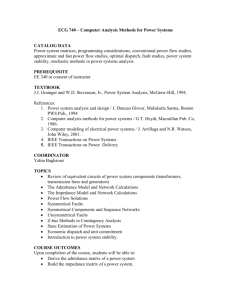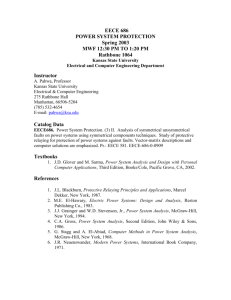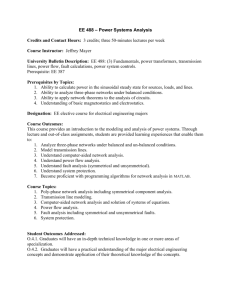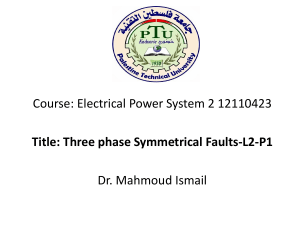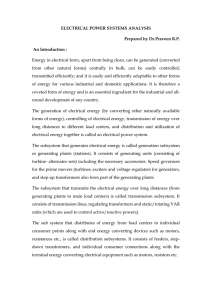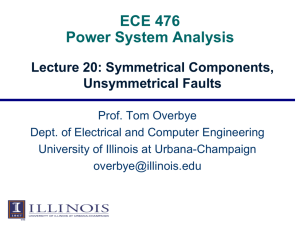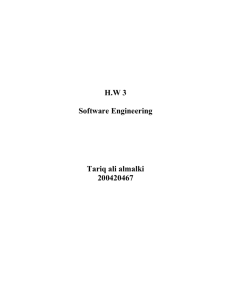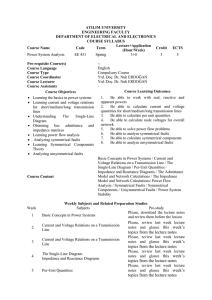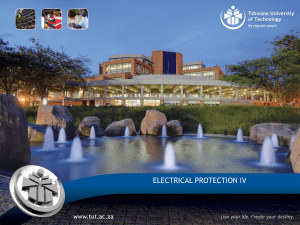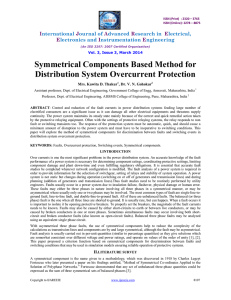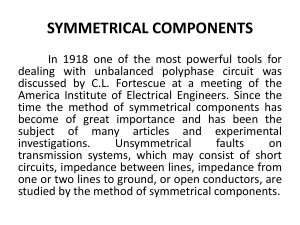ECE 610
advertisement
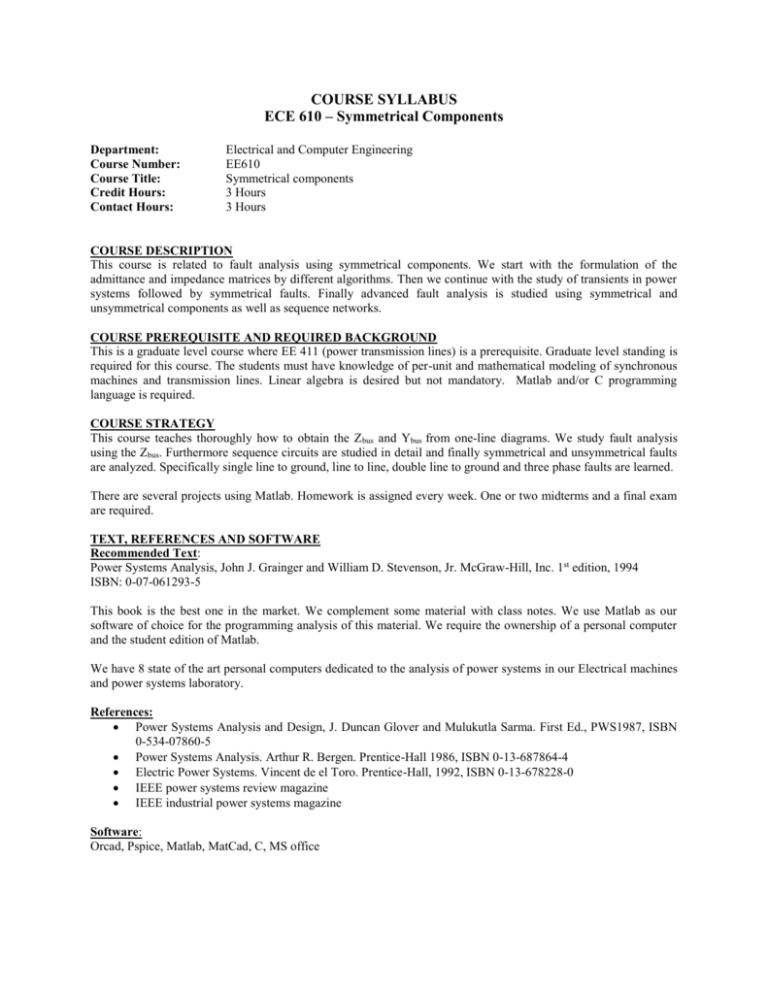
COURSE SYLLABUS ECE 610 – Symmetrical Components Department: Course Number: Course Title: Credit Hours: Contact Hours: Electrical and Computer Engineering EE610 Symmetrical components 3 Hours 3 Hours COURSE DESCRIPTION This course is related to fault analysis using symmetrical components. We start with the formulation of the admittance and impedance matrices by different algorithms. Then we continue with the study of transients in power systems followed by symmetrical faults. Finally advanced fault analysis is studied using symmetrical and unsymmetrical components as well as sequence networks. COURSE PREREQUISITE AND REQUIRED BACKGROUND This is a graduate level course where EE 411 (power transmission lines) is a prerequisite. Graduate level standing is required for this course. The students must have knowledge of per-unit and mathematical modeling of synchronous machines and transmission lines. Linear algebra is desired but not mandatory. Matlab and/or C programming language is required. COURSE STRATEGY This course teaches thoroughly how to obtain the Zbus and Ybus from one-line diagrams. We study fault analysis using the Zbus. Furthermore sequence circuits are studied in detail and finally symmetrical and unsymmetrical faults are analyzed. Specifically single line to ground, line to line, double line to ground and three phase faults are learned. There are several projects using Matlab. Homework is assigned every week. One or two midterms and a final exam are required. TEXT, REFERENCES AND SOFTWARE Recommended Text: Power Systems Analysis, John J. Grainger and William D. Stevenson, Jr. McGraw-Hill, Inc. 1st edition, 1994 ISBN: 0-07-061293-5 This book is the best one in the market. We complement some material with class notes. We use Matlab as our software of choice for the programming analysis of this material. We require the ownership of a personal computer and the student edition of Matlab. We have 8 state of the art personal computers dedicated to the analysis of power systems in our Electrical machines and power systems laboratory. References: Power Systems Analysis and Design, J. Duncan Glover and Mulukutla Sarma. First Ed., PWS1987, ISBN 0-534-07860-5 Power Systems Analysis. Arthur R. Bergen. Prentice-Hall 1986, ISBN 0-13-687864-4 Electric Power Systems. Vincent de el Toro. Prentice-Hall, 1992, ISBN 0-13-678228-0 IEEE power systems review magazine IEEE industrial power systems magazine Software: Orcad, Pspice, Matlab, MatCad, C, MS office COURSE OBJECTIVES After completing this course the students should be able to complete the fault analysis of a power systems network. More specifically, the students should be able to perform the calculations and analysis of the following faults: Single-line-to-ground faults Line-to-line faults Double line-to-ground faults COURSE OUTLINE 1. 2. 3. 4. 5. Admittance model and network calculations Impedance model and network calculation Symmetrical faults Symmetrical components and sequence networ Unsymmetrical faults RELATIONSHIP TO PROGRAM OBJECTIVES This supports the achievement of the following outcomes: a) Ability to apply knowledge of advanced principles to the analysis of electrical and computer engineering problems. b) Ability to apply knowledge of advanced techniques to the design of electrical and computer engineering systems. c) Ability to apply the appropriate industry practices, emerging technologies, state-of-the-art design techniques, software tools, and research methods of solving electrical and computer engineering problems. d) Ability to use the appropriate state-of-the-art engineering references and resources. Including IEEE research journals and industry publications, needed to find the best solutions of electrical and computer engineering problems. e) Ability to communicate clearly and use the appropriate medium, including written, oral and electronic communication methods. f) Ability to maintain life-long learning and continue to be motivated to learn new subjects. g) Ability to learn new subjects that are required to solve problems in industry without being dependent on a classroom environment. h) Ability to be competitive in the engineering job market or be admitted into a nationally recognized Ph.D. program. Prepared by: Bruno Osorno Date: Saturday, October 19, 2002
